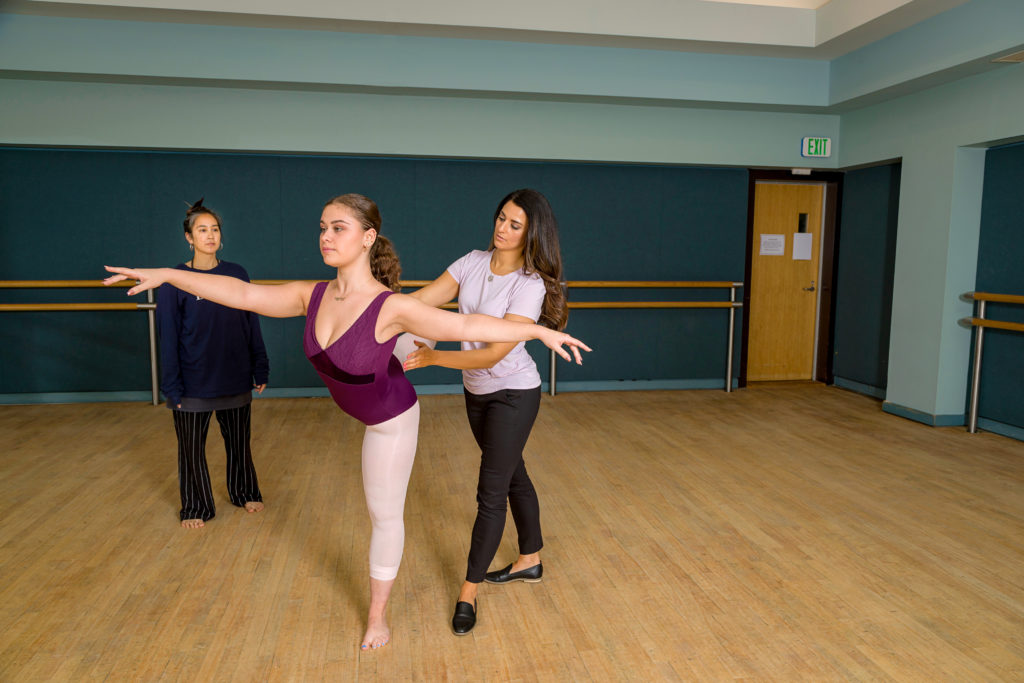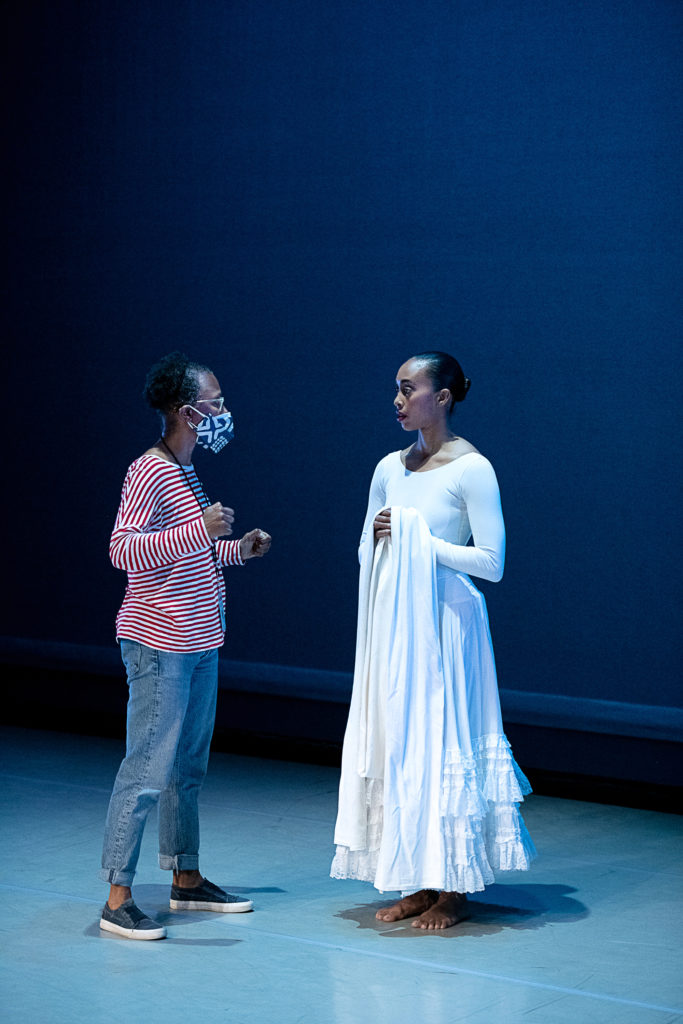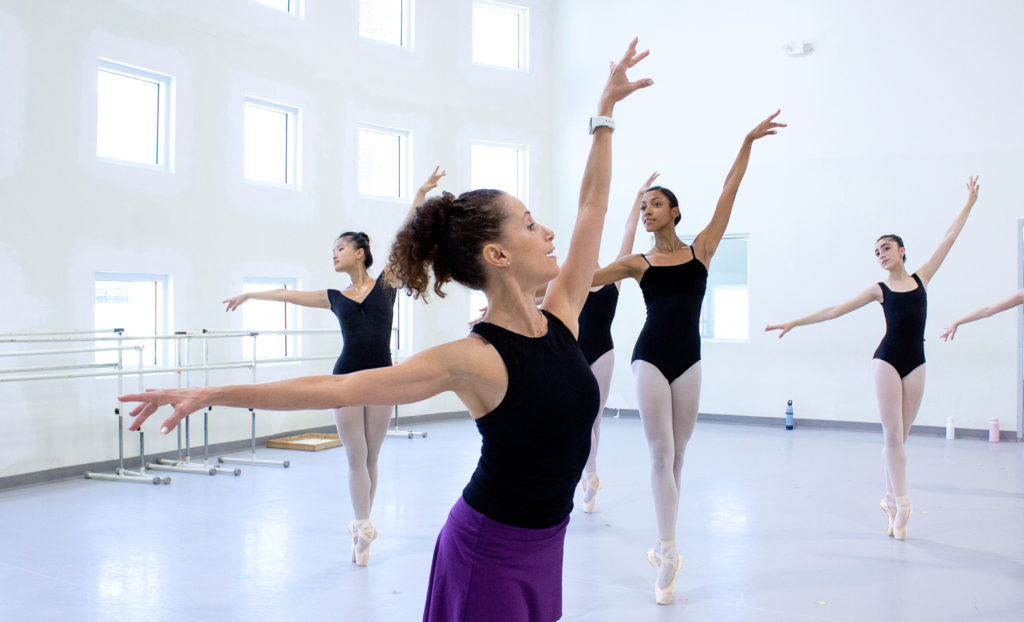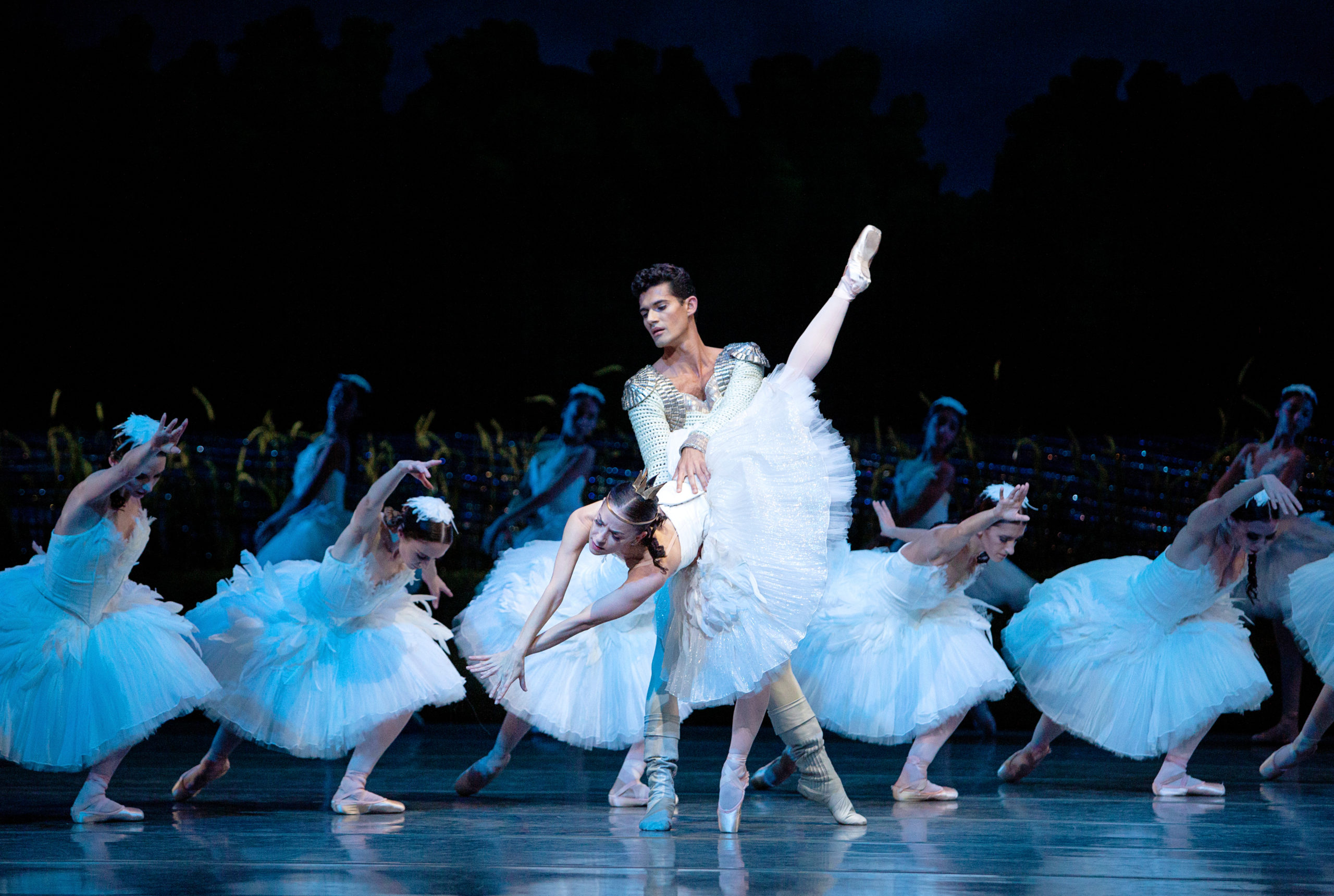Long and Strong: How to Find Effortless, Extended Lines
Working towards “longer lines” as a dancer can be complex. After all, you can’t actually make your limbs longer, and trying to is essentially “striving for something outside of yourself,” says Alvin Ailey American Dance Theater rehearsal director Ronni Favors. The aesthetic attached to long lines can also sometimes be unhealthy: “Long lines” can be a euphemism for thinness.
So rather than thinking of long lines as an aesthetic ideal, aim for finding stretch and elasticity in your line—an effortless line proportional to your body—as yet another tool in your toolbox, suggests Favors. “As a dancer you’re making shapes in space,” she says. “So to be able to inhabit the greatest amount of space is something that we all really strive for.”
Get Organized
Having freedom in the limbs to reach and stretch requires having a secure, aligned torso to move from, says physical therapist Andrea Lasner, who works with dancers at Johns Hopkins Hospital in Baltimore.

Core strength is one key, but be sure that your workouts aren’t counterproductive to the lengthening of your spine. When doing a crunch, for instance, the tendency is to pull on the neck or push out the abdomen, instead of pulling the abdominal muscles in and up to create more length, says Miami City Ballet School faculty member Maribel Modrono. She also recommends the classic Pilates roll-up, which emphasizes rolling through the spine on the way up and down.
Working in correct alignment is also essential to stabilizing the trunk and freeing up the limbs, says Favors, as misalignment can manifest in shortened lines by creating excess tension in the body or by causing dancers to tighten or grip their arms and hands as they grasp at a sense of control. Finding alignment is often a long journey, she says, one that can be helped along by Pilates and Gyrotonic, or a thoughtful teacher or coach.
Create Space
Just because a line is long doesn’t mean that it has the breezy, stretched quality many dancers want. Favors points out that sometimes when a dancer is seeking a long line it actually looks like they are pulling or tense.

For easy, attenuated lines, she suggests imagining that there’s additional space in the joints, to avoid compressing them. She also likes the idea of feeling the air around you—between your fingers, above the top of your head—and keeping that air in constant motion.
Of course, creating space for maximum mobility and, therefore, maximally stretched lines means having supple, warm muscles. Modrono stresses the importance of a proper warm-up before class and rehearsal—especially dynamic stretches for the hips and hamstrings—and recovery afterwards.
Extend From Distal Points
Modrono sees the head and neckline as an “exclamation point,” able to extend or complement the line. The hands and feet, in turn, can be either the finishing touches of a line or the unintentional breaking points. Both Favors and Modrono show dancers da Vinci’s “Vitruvian Man” to emphasize the idea of energy radiating from the center of the body and out through the distal points.
Even your focus can give the illusion of a more elongated line when used wisely, such as lifting your eyes slightly in a jump to suggest more height in the air, says Modrono. Favors adds that looking far beyond the walls of the studio or theater and into the imagined distance can heighten that illusion.
Angles and Circles
It’s a lesson learned by most ballet students at a young age, but worth remembering for any dancer: When angling your body, imagine you are standing in your own imaginary box. In other words, says Modrono, for consistent and flattering lines, angle yourself towards your corners, rather than the corners of the stage or studio.
Favors also finds circles to be a helpful image: “Even when you’re going to the end of your line, it’s always circling around, but you want each end to meet on the far side of the circle, as opposed to being pulled into the center,” she says.
Lengthen Through Transitions
Luxuriating in long, effortless lines is one thing when you have lots of time to play with. It’s an entirely different challenge during fast movement or moments of transition. To find opportunities to lengthen in difficult sequences, focus on efficiency, Lasner suggests, getting specific about what exactly your body is doing and how much muscular effort it will take to do it.
Favors agrees, and suggests dissecting the movement to find the shortest routes between destinations. “You have to be very economical because you don’t want to cut the movement short, but you also don’t want to go past it,” she says. “You need to know where the movement begins and where it ends.”

This also means not neglecting the in-between moments. “You have to make sure that you’re paying as close attention to your transitions as you are to the next big movement,” Favors says. “Because lots of times we just think of the ‘ta-da!’ but it’s the transitions that set us up for that.”
Creating elegant lines has less to do with the length of your legs or the flexibility of your hips and more with this kind of attention to detail and careful finessing. “I love to see people with a really exquisitely worked line that they have crafted and sculpted through their own discovery,” says Favors. “That’s as beautiful as somebody whose leg goes up past their ears.”
Channel the Breath
Dancers sometimes get so caught up in “achieving the line” that they’re actually holding their breath, or look like they are, says Modrono, which can make the line appear static and stilted. But, she says, adding breath to your movements, like port de bras, landing a jump or finishing a turn, can add grace and spirit to the quality of your dancing.




